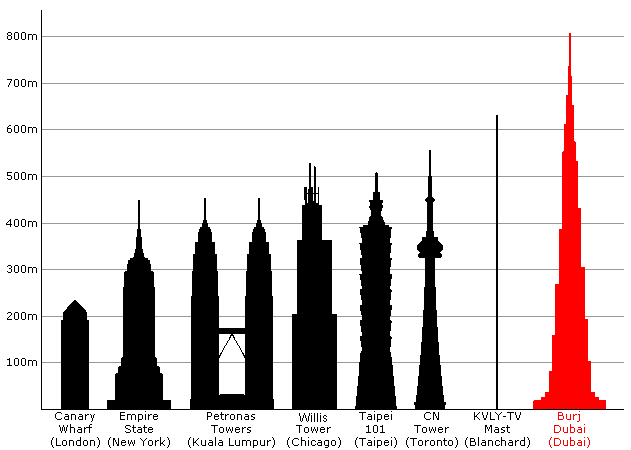For a technology oriented blog I rarely talk about buildings. But it is hard to ignore the Burj Dubai tower. This is the worlds tallest skyscraper and it is nearing completion This is a monster of a building and it is both awe inspiring and absolutely terrifying!
It is difficult to get the scale of the production but take a look at David Hobcote’s images over at Gizmondo…

(More images and info here)
Some stats from wikipedia
The tower is composed of three elements arranged around a central core. As the tower rises from the flat desert base, setbacks occur at each element in an upward spiralling pattern, decreasing the cross section of the tower as it reaches toward the sky. At the top, the central core emerges and is sculpted to form a finishing spire. A Y-shaped floor plan maximizes views of the Persian Gulf. Viewed from above or from the base, the form also evokes the onion domes of Islamic architecture. During the design process, engineers rotated the building 120 degrees from its original layout to reduce stress from prevailing winds. The tower, at its tallest point, sways a total of 1.2 m (3.9 ft).
The exterior cladding of Burj Dubai will consist of 142,000 m2 (1,528,000 sq ft) of reflective glazing, and aluminium and textured stainless steel spandrel panels with vertical tubular fins. The cladding system is designed to withstand Dubai’s extreme summer temperatures.
The interior will be decorated by Giorgio Armani. An Armani Hotel, the first of four by Armani, will occupy the lower 37 floors. Floors 45 through 108 will have 700 private apartments on 64 floors (which, according to the developer, sold out within eight hours of going on sale). An outdoor zero-entry swimming pool will be located on the 78th floor of the tower. Corporate offices and suites will fill most of the remaining floors, except for a 123rd floor lobby and 124th floor (about 440 m (1,444 ft)) indoor/outdoor observation deck. The spire—itself over 200 m (700 ft) tall—will hold communications equipment.
Check out this comparison chart from Wikipedia

Tall buildings are fascinating but structures of this size are more than simply tall. This tower becomes it’s own ecosystem in the middle of a desert. The official website informs readers that at peak cooling times, the tower will approximately require per hour the equivalent of 10, 000 tons of melting ice per day.
Say no more…


